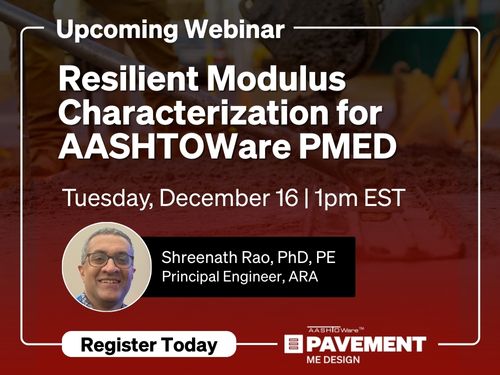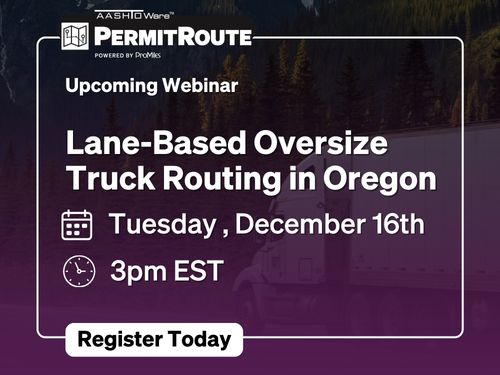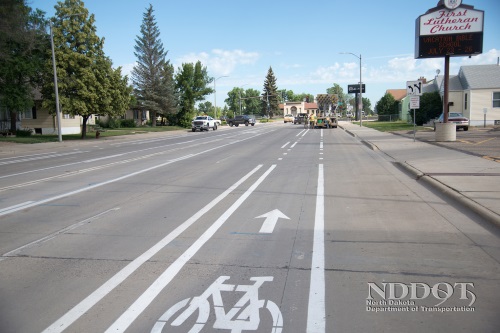On Jan. 29, the American Association of State Highways and Transportation Officials’ Council on Active Transportation will conduct a free one-hour webinar on bicycle and pedestrian project planning.
[Above photo by North Dakota DOT.]
Ben Ehreth and Steve Mullen from the planning/asset management division at the North Dakota Department of Transportation will provide an overview of an effort their agency initiated last June to create temporary demonstration projects, or “pop-up” projects, that represent a “community approach” for determining desired types of long-term changes for safer streets and healthier, more vibrant communities.

“Demonstration projects allow people walking, biking, taking transit or driving to test run potential project features,” noted Mullen, North Dakota DOT’s planner and project manager, in a statement. “Along with helping NDDOT determine the types of walkable features the public likes, the pop-up projects also help communities determine how to incorporate active transportation into their long term planning.”
NDDOT will discuss the “positive outcomes” and lessons learned from those pop-up projects and how they influenced North Dakota’s statewide active and public transportation plan, ND Moves.
Jackie DeWolfe, director of sustainable mobility at the Massachusetts Department of Transportation – a position created nearly two years ago to enhance multi-modal transportation options – will discuss the agency’s new Statewide Pedestrian Plan, Statewide Bicycle Plan, and companion documents, as well as how projects originating from those plans were implemented and the metrics involved in measuring their success.

“We are definitely seeing more productive relationships with more organized community groups around bicycle and pedestrian issues; some state-wide and some city-wide,” explained Pennsylvania Department of Transportation Secretary Leslie Richards and chair of AASHTO’s Council on Active Transportation, in a phone interview with the AASHTO Journal. “More diverse groups of people are discussing this topic, with pedestrian safety being discussed more frequently at the grass roots level now.”
[Editor’s note: Richards participated in a “mobile workshop” hosted by AASHTO at its 2018 spring meeting in Spokane; a workshop focused on how to develop more “bike friendly” transportation infrastructure.]
Richards noted that over the last two and half years, she’s begun to work more closely with school communities – everything from K-12 districts up through colleges – than ever before in her career, largely to focus on bicycle and pedestrian issues.
“School districts are now an early part of our project discussion,” Richards explained. “We talk about how students – from K-12 through college – get to their campuses by walking or biking. We look at pedestrian safety, in urban and rural areas alike; that is part of every projects well.”

[Editor’s note: The Transportation Research Board named Richards as the vice chairman of its 2019 executive committee, effective Jan. 16 this year; an appointment she said will help her “better understand all the things they do” while expanding on the group’s multimodal focus. Committee members are appointed for a term of three years and may be reappointed for one term.]
Electric scooters are also a “hot topic” right now as cities and states seek to “organize” their deployment better, she noted “Should they be restricted to bike lanes? Should they be allowed to use the sidewalks? And what places can they use to park? Those are all brand new issues,” Richards said.
Registration for this webinar is available here. After registering, you will receive a confirmation email containing information about joining the webinar. Please contact AASHTO’s Sofie Rhoads, associate program manager for environment, with any questions.
 AASHTO
AASHTO
AASHTOWare Webinar: The Impact of ‘Resilient Modulus’
December 12, 2025 AASHTO
AASHTO

